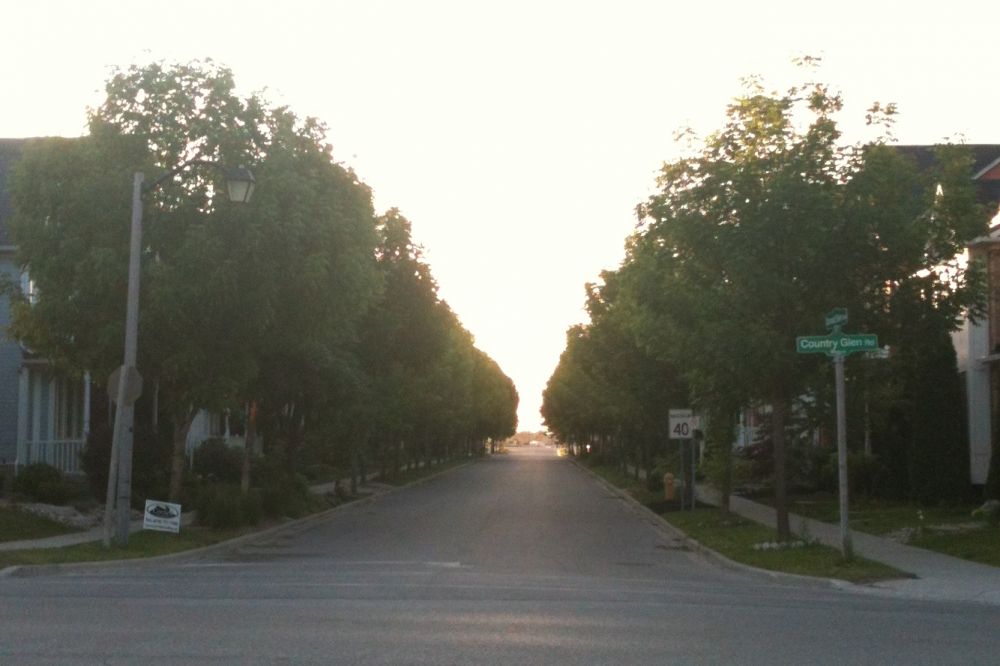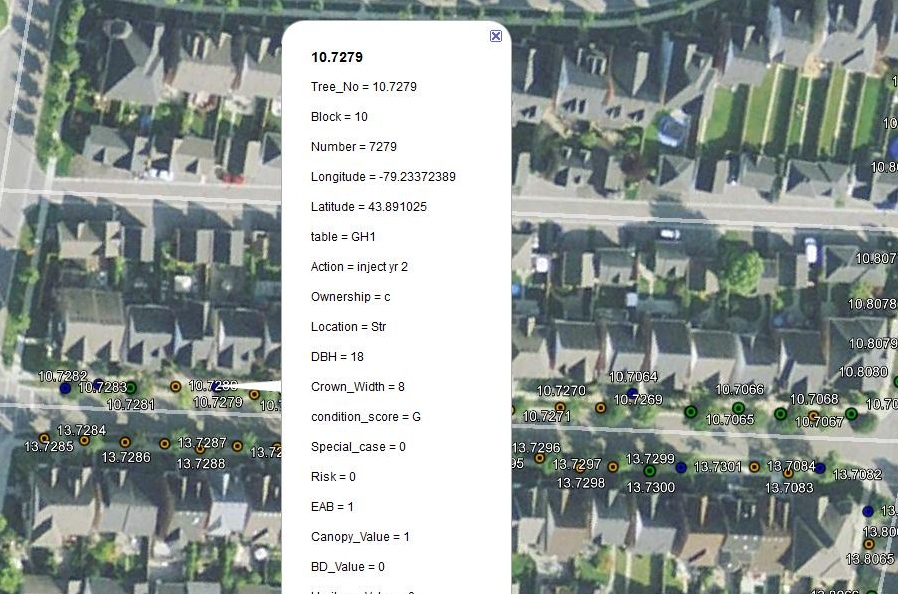The EAB crisis here in the GTA is no different - we all must play a part. This is why I’ve dedicated the final months of my graduate studies to developing a way to empower experts and non-experts alike, to cover our ash and stand up to EAB.
I have been working with Xin Zhou, a colleague of mine at the University of Toronto’s Faculty of Forestry, on developing and testing the community-based NeighbourWoods© EAB Management Model as part of our graduate thesis. This model is designed to allow community groups to do most of the leg work that local governments simply don’t have the time to do. It helps save the most valuable trees, while recognizing the priorities and values of the community.

This street in Markham is all ash trees. They will all be lost to EAB within the next 5 years, but the NeighbourWoods© EAB Management Model has identified several that can be saved.
Our model is based on an expansion of the NeighbourWoods© community inventory protocol, developed in 1995 by Andy Kenney Ph.D, Forestry, and Danijela Puric-Mladenovic Ph.D, Forestry. We use the NeighbourWoods© data, gathered by the community, to calculate not only a tree’s condition but its value to local residents. Through collaboration with communities we have a more balanced view of a tree’s value and use this to suggest scientifically sound best practices for local ash trees.
The goal is to tailor a suite of management options to the community’s preferences and resources to ensure that the costs to the community are minimized, and that dangerous ash trees are addressed. These management actions include pro-active tree removal, canopy-based replacement, tree preservation through injection, and creative methods such as underplanting. Community groups can then take this scientifically defensible information to their local government, which speeds up the assessment process and allows for swifter, pro-active actions.

So far, our model has been tested with four communities in the GTA: the University of Toronto St. George Campus and Harbord Village in Toronto, and Cornell and Angus Glen in Markham. All of our data is presented in Google Earth and is easily accessible. The image above shows a birds-eye view of the same street from the previous photo with ash trees mapped out. Individual trees are identified that should be injected (green in year 1, and blue in year 2), removed immediately (red), underplanted (yellow), and left to die naturally (orange).
The community of Harbord Village in Toronto is currently speaking with their local councilor about the model output. The University of Toronto has already taken several actions based on the model, including the removal of several severely infested ash trees and the injection of several other highly valuable ones. And we are running a test study in conjunction with the city of Markham’s Forestry department in the hopes that this technique can be officially accepted.
if you are concerned about how EAB will affect your community, contact us at the Faculty of Forestry to discuss how we can help.
Sarah Melamed is wrapping up a Masters of Forest Conservation at the University of Toronto’s Faculty of Forestry. Her focus is on community engagement and stewardship, and she believes that an informed and active public can make all the difference.
